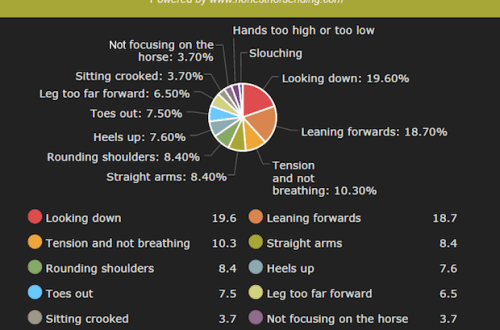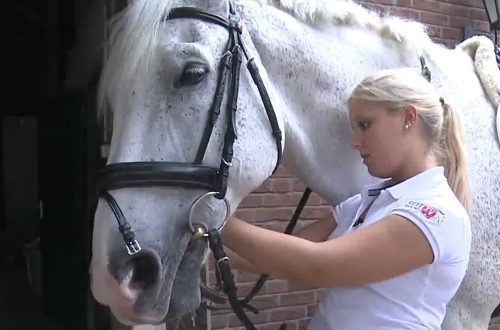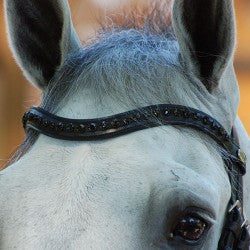
Getting to know the dressage headband
Getting to know the dressage headband
Before purchasing a harness for further work with a horse, it is necessary to consider several important factors.
Proper use of the bridle will make your collection work easier and affect the horse’s ability to carry himself. However, if you, as a rider, are not yet ready to use it (at least you do not have a soft hand and do not know how to get good contact from a horse on an ordinary snaffle), then remember that your mistakes can lead to such negative phenomena as anxiety in horses, mouth problems, etc.
Before putting on a bridle, be sure to consult with your trainer!
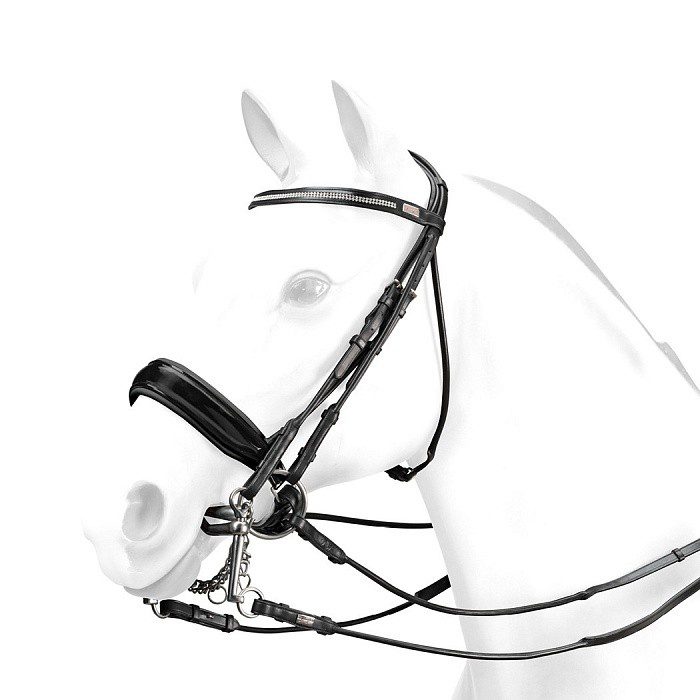
The bridle is used to improve communication between rider and horse at the highest level of the horse training scale. Before you decide to use a bridle, the horse must be at an intermediate level, be able to bring the hindquarters in and move away from the hindquarters on a normal bit.
The easiest way to check this is to do a simple canter change of foot (through a walk: transition into a walk and rise from the other leg into a canter – the transition should be clear, with balance). .
Consider the main components of the headband.
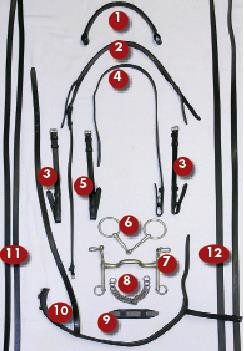
1. Headpiece. 2. Neck strap. 3. Cheek straps for the mouthpiece. 4. Cheek strap for snaffle iron. 5. The second part of the cheek strap for the snaffle iron. 6. Snaffle iron. 7. Mouthpiece iron. 8. Chain. 9. Substrate for the chain. 10. Capsule. 11. Mouthpiece rein. 12. Snaffle rein.
Headband suggests simultaneous the use of two types of iron – snaffle and mouthpiece.
Snaffle influences the longitudinal and transverse flexion, influences the contraction and expansion of the frame, and also controls the movement of the horse’s neck to the left and right.
Mouthpiece affects the longitudinal flexion, controls the position of the neck and the back of the head and their rise in the vertical plane, closing the frame.
Occipital strap affects the nape of the horse due to the lever action of the mouthpiece. A horse with a sensitive nape will be more comfortable if the nape strap has a soft padding. These pads can be purchased at horse stores. Some aboutthe heads are already sold with them.
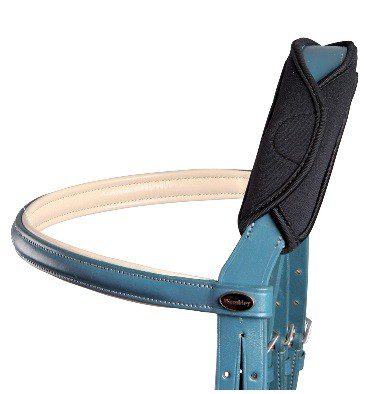
Gel on the neck strap.
When choosing iron, it is necessary to take into account the anatomical features of the horse’s mouth – the shape of the mouth, tongue, height of the arch of the palate and its shape.
The height of the arch of the mouthpiece should correspond to the height of the sky, and the width of the bit should correspond to the width of the horse’s mouth.
Horses with a thin tongue may be better suited with a lower arched mouthpiece that will act directly on the tongue.
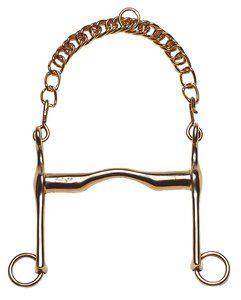
A horse with a large thick tongue will be more comfortable in a higher arched mouthpiece, there will be more room for the tongue and it won’t get pinched. A high arch is also suitable for horses with a high palate.
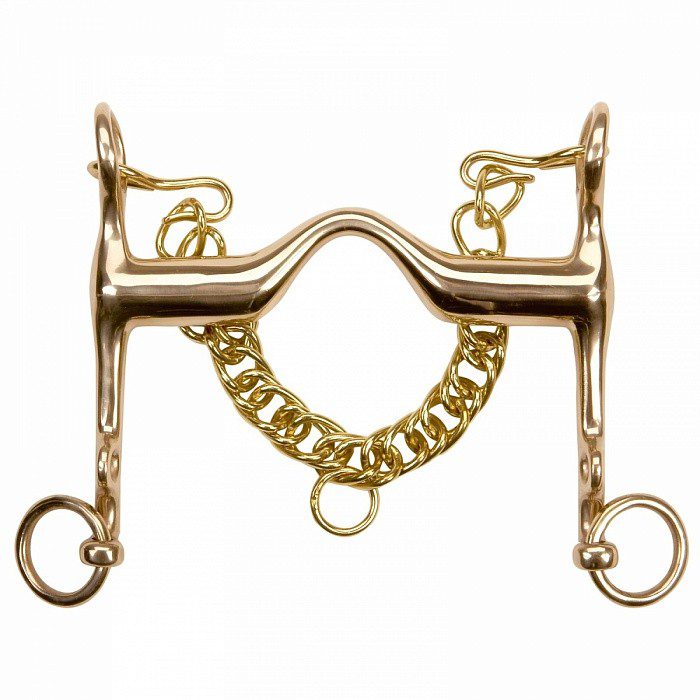
A horse with a low palate may need a more anatomical bit with a soft arch that will not cause discomfort to the horse by pressing on the palate.
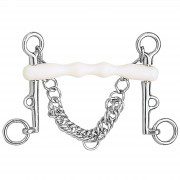
Mouthpiece HAPPY MOUTH plastic.
In any case, the iron should be selected individually for each horse, based on the principles of comfort and functionality. Check with your trainer and possibly your veterinarian. In the matter of choosing such a “serious” iron as a mouthpiece, it is advisable to do without trial and error.
The snaffle should usually be half a size larger than the mouthpiece. Therefore, the size of the snaffle used in the headband will be half a size larger than the snaffle you normally use. This is necessary so that two gnaws fit in the horse’s mouth. You may need to lengthen the cheek straps for the snaffle iron by a notch. Even a half division can make a difference.
The exact size of the mouthpiece and snaffle will depend on the size of the horse’s mouth. In order not to make a mistake when choosing, consult with a professional.
Headband fit can be challenging and should be done under the supervision of a trainer at first. Make sure the capsule is placed near the cheekbone so that there is sufficient clearance between it, the snaffle and the mouthpiece.
Chasing chain, care must be taken not to overtighten it. An incorrectly fitted chain can cause considerable discomfort to the horse. Don’t forget to use a backing for the chain. On sale you can find its gel (more comfortable) counterparts.
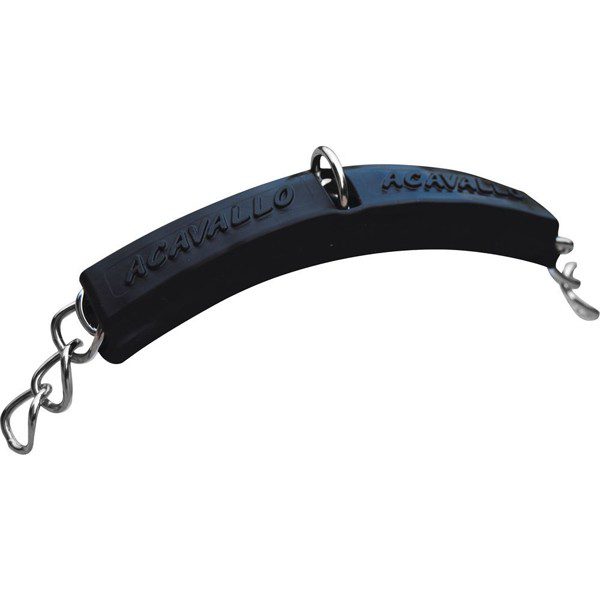
Gel on the mouthpiece.
If the chain is attached correctly, the levers of the mouthpiece should tilt up to 45 degrees. If the angle is greater, then the arch of the mouthpiece will create excessive pressure on the palate. Ask the trainer to first pay attention to the correctness of your fit.
Your first workout
While sitting on the horse, pick up the snaffle rein as if you were riding a regular bridle. Ignore the mouthpiece rein for now. Pass the snaffle rein between the ring and pinky fingers. The fingers should be bent. Pick up the reins and make contact with the horse’s mouth.
Bring your middle and index fingers together, as if you want to take someone’s pulse. Take them aside, put a thin mouthpiece rein between them and the ring finger and close the brushes.
When you bring your hands together, you will have contact with the four reins. Remember to gently hold the reins until you get used to the new harness.
If your horse understands the concept of balance, can carry himself to some extent, and has an idea of continuous and light contact, then the transition to the bridle will be smooth and easy. However, in the first workouts, pay attention to your own feelings. Be calm, don’t worry. Give the horse time to get used to the new harness. If you take your time and don’t make the mistake of frightening and hurting your horse, there will be many pleasant moments of effective work ahead of you.
Ana Gilmore (source); translation by Valeria Smirnova.
Photos courtesy of Prokoni Shop.




